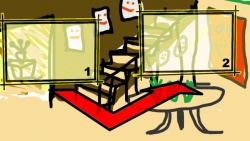Digital skills for collaborative OER development/Storyboarding/Storyboard structure
From WikiEducator
| “ | The storyboard for me is the way to visualise the entire movie in advance. | ” |
| —Martin Scorsese, Oscar-winning film director[1] | ||
The general structure of a storyboard for learning design comprises the following components, which are then specified for each of the topics to be included in the course:
for Topic 1 |
for Topic 2 | |
|---|---|---|
| Learning outcomes Specify the learning outcomes for the topic to guide your design so that assessments, activities and resources are fit for purpose |
List relevant outcomes | List relevant outcomes |
| Assessment Think about substantive assessments, both formative and summative, before detailing all the e-learning activities. In this way, you can develop e-learning activities to scaffold the course assessments. |
Formative or summative assessment | Formative or summative assessment |
| e-Learning Activities Design a variety of e-learning activities drawing on your preferred learning design approaches. |
Specify online activities | Specify online activities |
| Resources Generate an initial list of tentative types of resources, for example open access articles, chapter readings, videos, podcasts, etc. At this early stage of the design it is not necessary to identify the exact resource unless you already have a clear idea of the resources you would like to use. |
Content or resources to support learning | Content or resources to support learning |
